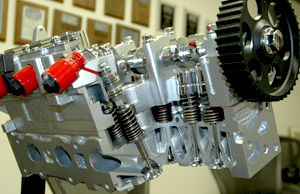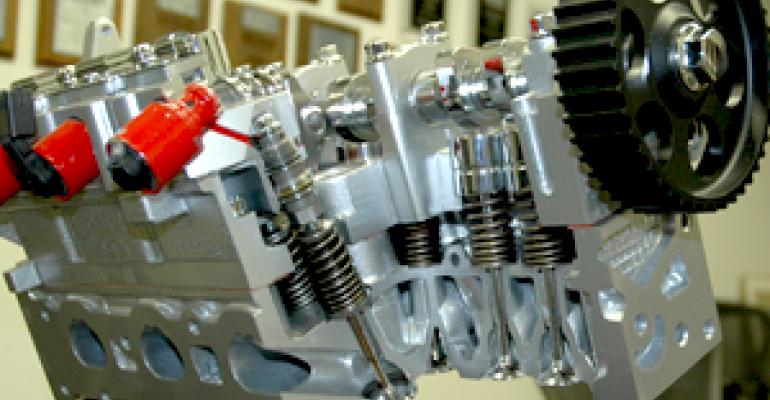
Preview the WardsAuto 10 Best Engines Judges and some of the tested engines
Thanks to the downsizing of powertrains, the editors at WardsAuto figured we set a record last year evaluating so many small 4-cyl. engines as part of the 2011 Ward’s 10 Best Engines competition.
Thirteen of the 37 engines considered last year were no larger than 2.0L, and the average displacement was 2.8L.
A decade ago, when much larger V-6s and V-8s ruled the market, the average would have been much larger.
In this year’s class of nominees, 18 of 35 engines are no larger than 2.0L, delivering an average displacement of 2.5L – a record low.
The cost of designing, manufacturing and integrating a new engine is enormously expensive today, so the fact so many new engines are coming to market in rapid succession demonstrates the enormous pressures facing auto makers as they struggle to meet pending fuel-economy mandates.
By the looks of our nominating class, no auto maker is yielding the floor to rivals. We said it last year, and the statement holds true today: Never before have we seen so many power-dense, technology-rich, high-efficiency engines in the Ward’s 10 Best Engines competition.
Years ago, a specific output of 100 hp/L seemed a stretch.

But auto makers now routinely blow past that threshold.
Does 150 hp/L represent the next benchmark?
Among this year’s over-achievers are 2.0L direct-injection gasoline turbocharged 4-cyl. engines in the Buick Regal GS, rated at 135 hp/L, and the BMW Z4 sDrive28i, which produces 120 hp/L.
The latest class also applies direct fuel injection like never before, integrated on 20 of the test engines to boost both performance and fuel economy.
Related document: 2012 Ward’s 10 Best Engines Nominees
In many cases, such as Ford’s EcoBoost strategy, direct injection is paired with forced induction. This year’s crop includes 11 turbocharged engines and one supercharged.

Need more evidence of downsizing? Last year, WardsAuto editors evaluated six V-8s. This year, that number is down to three, including two returning winners, the 5.0L Tau in the Hyundai Genesis and the “Five-O” in the Ford Mustang Boss 302. Those two face a challenge from the 470-hp 6.4L Hemi in the Dodge Charger SRT8.
At the other end of the spectrum are five vehicles with some level of electric assist, from the all-electric Nissan Leaf to hybrid versions of the Honda Civic, Infiniti M and Toyota Camry.
General Motors weighs in with the Chevy Volt extended-range EV and mild hybrid eAssist Buick LaCrosse.
The inclusion of electric vehicles in this year’s competition is consistent with the position we took in 2010: All propulsion systems that can keep up with highway traffic will be eligible for recognition.

WardsAuto editors are using the same process that has been in place for 18 years to pick the 2012 winners.
We drive the vehicles in October and November in our routine commutes in city traffic and on the highway and submit scoresheets for each engine.
Points are awarded based on an engine’s overall power; noise, vibration and harshness characteristics; technical attributes; fuel economy; and its relevance among competitors.
The 2011 winners automatically are eligible for this year’s competition, which includes every new and improved engine available in the U.S. by the end of the first quarter of 2012. Base price is capped at $55,000, same as last year.
Winners will be named in mid-December, and the awards will be presented at the Ward’s 10 Best Engines event Jan. 11 during the North American International Auto Show in Detroit.
The process of gathering a list of new and upgraded engines eligible for the 2013 competition already is under way.
Yes, new engine programs are expensive, but without state-of-the-art technology to dramatically reduce fuel consumption, an auto maker runs the risk of fading into obscurity.





